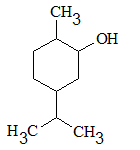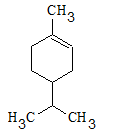
(a)
Interpretation:
All the stereocentres should be marked using asterisk in the given molecule. Calculate the number of stereoisomers possible.

Concept Introduction:
The stereocentre is generated in an organic compound due to presence of chiral carbon.
The chiral carbon is the carbon bearing all the four groups different. Even isotopes are considered as different groups.
(b)
Interpretation:
All the stereocentres should be marked using asterisk in the given molecule. Calculate the number of stereoisomers possible.

Concept Introduction:
The stereocentre is generated in an organic compound due to presence of chiral carbon.
The chiral carbon is the carbon bearing all the four groups different. Even isotopes are considered as different groups.
(c)
Interpretation:
All the stereocentres should be marked using asterisk in the given molecule. Calculate the number of stereoisomers possible.

Concept Introduction:
The stereocentre is generated in an organic compound due to presence of chiral carbon.
The chiral carbon is the carbon bearing all the four groups different. Even isotopes are considered as different groups.
(d)
Interpretation:
All the stereocentres should be marked using asterisk in the given molecule. Calculate the number of stereoisomers possible.

Concept Introduction:
The stereocentre is generated in an organic compound due to presence of chiral carbon.
The chiral carbon is the carbon bearing all the four groups different. Even isotopes are considered as different groups.
Want to see the full answer?
Check out a sample textbook solution
Chapter 14 Solutions
Introduction to General, Organic and Biochemistry
- ヨ C 6:48 Di✔ < Question 12 of 22 5G 57% Submit The pH of a solution is 12.50. What is the H+ concentration in the solution? A 0.032 M B 3.2 × 10-13 M 1.5 M D 9.25 M 12.50 M Tap here for additional resources |||arrow_forwardヨ C 6:48 Di✔ < Question 11 of 22 5G 57% Submit The pH of a solution is 1.50. What is the H+ concentration in the solution? A 0.032 M B 3.2 × 10-13 M 1.5 M D 2.15 M 12.50 M Tap here for additional resources |||arrow_forwardSelect the product of the following reaction. Lon HO Meat ?? CH₂OH OH A D OH OCH B OH of OCH of CH חח E C CHarrow_forward
- Please correct answer and don't used hand raitingarrow_forwardPlease correct answer and don't used hand raitingarrow_forwardUse excel to plot the following titration data. Once you have done your plot, make sure to label the axes correctly. Use your graph to determine the pK, for the weak acid. Attach your plot to the back of this worksheet. A 1.0M solution of weak acid was titrated with a base and the following data was collected. Equivalents of Base pH observed 0.05 3.4 0.15 3.9 0.25 4.2 0.40 4.5 0.60 4.9 0.75 5.2 0.85 5.4 0.95 6.0arrow_forward
- 1. Write the dissociation reaction then calculate the pH for the following STRONG substances. a. 2.5x103 M HBr b.5.6x10 M NaOHarrow_forward74. A contour map for an atomic orbital of hydrogen is shown below for the xy and xz planes. Identify the type (s, p, d, f, g . . .) of orbital. axis x axis z axis Cooo xy planearrow_forwardA buffer is prepared by adding 0.50 mol of acetic acid (HC2H3O2) and 0.75 mol of sodium acetate (NaC2H3O2) to enough water to form 2.00L solution. (pKa for acetic acid is 4.74) Calculate the pH of the buffer.arrow_forward
- Modify the given carbon skeleton to draw the major product of the following reaction. If a racemic mixture of enantiomers is expected, draw both enantiomers. Note: you can select a structure and use Copy and Paste to save drawing time. HBr کی CH3 کی Edit Drawingarrow_forwardSort the following into the classification for a reaction that is NOT at equilibrium versus a reaction system that has reached equilibrium. Drag the appropriate items to their respective bins. View Available Hint(s) The forward and reverse reactions proceed at the same rate. Chemical equilibrium is a dynamic state. The ratio of products to reactants is not stable. Reset Help The state of chemical equilibrium will remain the same unless reactants or products escape or are introduced into the system. This will disturb the equilibrium. The concentration of products is increasing, and the concentration of reactants is decreasing. The ratio of products to reactants does not change. The rate at which products form from reactants is equal to the rate at which reactants form from products. The concentrations of reactants and products are stable and cease to change. The reaction has reached equilibrium. The rate of the forward reaction is greater than the rate of the reverse reaction. The…arrow_forwardPlace the following characteristics into the box for the correct ion. Note that some of the characteristics will not be placed in either bin. Use your periodic table for assistance. Link to Periodic Table Drag the characteristics to their respective bins. ▸ View Available Hint(s) This anion could form a neutral compound by forming an ionic bond with one Ca²+. Reset Help This ion forms ionic bonds with nonmetals. This ion has a 1- charge. This is a polyatomic ion. The neutral atom from which this ion is formed is a metal. The atom from which this ion is formed gains an electron to become an ion. The atom from which this ion is formed loses an electron to become an ion. This ion has a total of 18 electrons. This ion has a total of 36 electrons. This ion has covalent bonds and a net 2- charge. This ion has a 1+ charge. Potassium ion Bromide ion Sulfate ionarrow_forward
 ChemistryChemistryISBN:9781305957404Author:Steven S. Zumdahl, Susan A. Zumdahl, Donald J. DeCostePublisher:Cengage Learning
ChemistryChemistryISBN:9781305957404Author:Steven S. Zumdahl, Susan A. Zumdahl, Donald J. DeCostePublisher:Cengage Learning ChemistryChemistryISBN:9781259911156Author:Raymond Chang Dr., Jason Overby ProfessorPublisher:McGraw-Hill Education
ChemistryChemistryISBN:9781259911156Author:Raymond Chang Dr., Jason Overby ProfessorPublisher:McGraw-Hill Education Principles of Instrumental AnalysisChemistryISBN:9781305577213Author:Douglas A. Skoog, F. James Holler, Stanley R. CrouchPublisher:Cengage Learning
Principles of Instrumental AnalysisChemistryISBN:9781305577213Author:Douglas A. Skoog, F. James Holler, Stanley R. CrouchPublisher:Cengage Learning Organic ChemistryChemistryISBN:9780078021558Author:Janice Gorzynski Smith Dr.Publisher:McGraw-Hill Education
Organic ChemistryChemistryISBN:9780078021558Author:Janice Gorzynski Smith Dr.Publisher:McGraw-Hill Education Chemistry: Principles and ReactionsChemistryISBN:9781305079373Author:William L. Masterton, Cecile N. HurleyPublisher:Cengage Learning
Chemistry: Principles and ReactionsChemistryISBN:9781305079373Author:William L. Masterton, Cecile N. HurleyPublisher:Cengage Learning Elementary Principles of Chemical Processes, Bind...ChemistryISBN:9781118431221Author:Richard M. Felder, Ronald W. Rousseau, Lisa G. BullardPublisher:WILEY
Elementary Principles of Chemical Processes, Bind...ChemistryISBN:9781118431221Author:Richard M. Felder, Ronald W. Rousseau, Lisa G. BullardPublisher:WILEY





